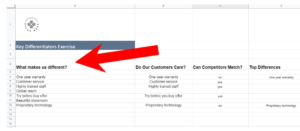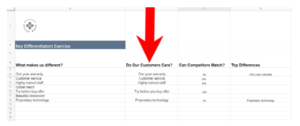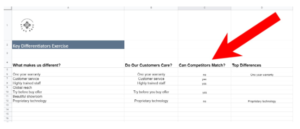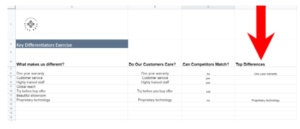What’s Your Brand’s Competitive Advantage?
(Hint: it’s not what you think)
What is it that makes your company special? Do you have some secret formula that your competitors can’t replicate? Is it your well-trained employees? Beautiful showroom or customer service?
For most brands, there are one or two things that stand out that you’re proud of and build a marketing message around. But what if you’re wrong? What if you’ve miscalculated and there is something you’re missing? It may have changed over time too.
Are you limiting your growth and not taking advantage of opportunities?
The marketing leadership company, Atlas Rose has been asking these questions of their clients too and has developed an exercise to confirm your assumptions or challenge you to think in a completely different direction.
As part of their Brandmap 360tm exercises, they have a process designed to set a marketing direction for company clients and set the foundation for long-term success.
Company founder, Branden O’Neil, has an approach to marketing that can be described as systematic. “The term marketing can be overwhelming to company leaders because it’s so broad of a description, it’s hard to know where to start first. If you’re trying to build a marketing program and get tasks out of order, you risk wasting money on advertising and getting the messaging wrong.”
It’s for this reason, his team introduces the Key Differentiators exercise early in the marketing design process.
He generously shared the exact exercise with us. “It’s tremendously useful, yet simple. You can do it yourself with your team in your next management meeting,” he says.
First, he opens an Excel or Google Sheet document. The first column is the header ‘What makes us different.’ “It’s just a brainstorming exercise at this point. I want to capture what the team perceives as special. There are no bad answers,” he says. Some common themes develop between participants. It could be customer service, product quality, profitability, or market share.

After a few minutes and after ideas are exhausted, he moves to column two asking “Does the customer care?”
This is where the exercise picks up momentum and starts to take shape. Only the “yes” ideas are moved from column one to column 2. For example, if “profitability” was listed in column one, it wouldn’t move to column two because customers don’t care and it doesn’t add value to your product or service. As a general rule, about 50% of ideas clear this bar.

The third column is even more interesting because it asks if your competitors can claim the same thing.
“Customer service” is frequently listed as something that makes a company different, but it’s tough to make that a central marketing message because your competitors can say the same thing. For that reason, it rarely clears the third column.” Of course, there are exceptions and keen readers may be thinking about how Ritz Carlton and Neiman Marcus built a reputation around customer service. O’Neil counters that while true, he is looking for faster and easier differentiators to implement.
In this third column, most ideas are squashed with only 1-3 ideas clearing the final hurdle.

These ideas become the top differentiators. These are differences your customers care about, and ones your competitors can’t match.

It’s these differentiators that become the foundation for your marketing efforts to win customers.
O’Neil then recommends looking at your business through the lens of a prospect. Does your website reflect these discovered differentiators? Is this built into your sales presentations? Is this highlighted in your marketing collateral? If not, you’re limiting your growth and not realizing your true revenue potential. Do the exercise today, you’ll be glad you did.
For a shortcut on this exercise, download this Key Differentiator Template, courtesy of Atlas Rose.



